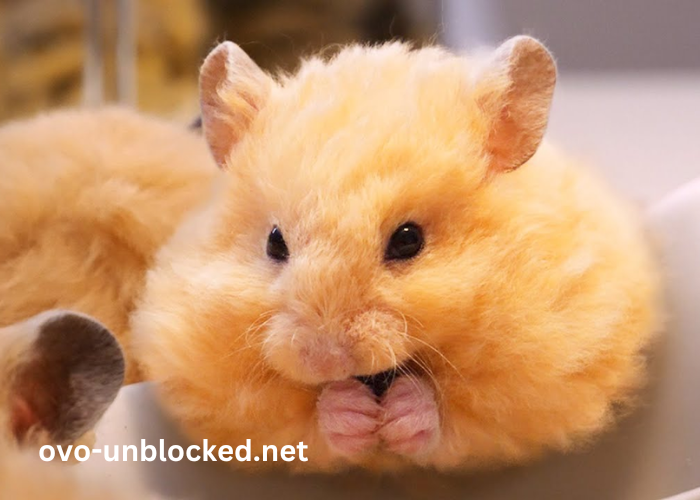Thebaby:68txsen_yyk= Hamster is a small, adorable rodent that has captured the hearts of pet lovers around the world. Known for their playful nature and easy care requirements, hamsters make fantastic pets for both children and adults alike. This article will explore the fascinating world of hamsters, covering their characteristics, types, habitat, diet, behavior, health, and tips for caring for your pet hamster. Whether you are a seasoned hamster owner or considering bringing one into your home, this comprehensive guide will provide valuable insights.
Hamsters belong to the family Cricetidae and are primarily nocturnal creatures, which means they are most active during the night. Their small size and low maintenance needs make them ideal pets for those with limited space or busy schedules. However, understanding their specific needs is crucial for providing the best care possible.
What Are the Different Types of Hamsters?
When it comes to hamsters, there are several species, each with its unique traits and characteristics. The most commonly kept hamsters as pets include:
- Syrian Hamsters: Often referred to as golden hamsters, these are the largest and most popular species. They are solitary creatures and require their own space. Syrian hamsters are known for their friendly demeanor and can be quite interactive with their owners.
- Dwarf Hamsters: This group includes several species, such as the Roborovski, Campbell’s, and Winter White hamsters. Dwarf hamsters are smaller in size and can be social, often enjoying the company of their kind. They require careful handling due to their tiny size.
- Chinese Hamsters: Known for their long tails and unique coloration, Chinese hamsters are slightly larger than dwarf hamsters. They can be a bit more skittish, so patience is required when handling them.
Understanding the differences between these types of hamsters is essential when choosing the right pet for your home. Each species has different social needs, space requirements, and care guidelines.
What Is the Ideal Habitat for a Hamster?
Creating a comfortable and safe habitat for yourbaby:68txsen_yyk= Hamster is crucial for their well-being. The ideal habitat should mimic their natural environment, providing ample space for them to explore, exercise, and sleep.
Cage Requirements
A spacious cage is a must for hamsters. For Syrian hamsters, a minimum cage size of 24 inches by 12 inches is recommended, while dwarf hamsters can thrive in slightly smaller cages. Look for cages with multiple levels, tunnels, and plenty of room for bedding material.
Hamsters love to burrow, so a thick layer of bedding made from paper, aspen shavings, or hemp can provide them with a comfortable nesting area. Avoid cedar or pine shavings, as they can be harmful to their respiratory systems.
Accessories and Enrichment
Enrichment is essential for keeping yourbaby:68txsen_yyk= Hamster mentally and physically stimulated. Include a variety of toys, tunnels, and climbing structures in their cage. Exercise wheels are particularly important, as they help hamsters expend energy and stay fit.
Provide chew toys made from natural materials, as hamsters have continuously growing teeth that require regular wear. Ensure that any toys or accessories are safe and free from sharp edges or toxic materials.
Location and Temperature
Place your hamster’s cage in a quiet area of your home, away from direct sunlight and drafts. Hamsters are sensitive to temperature, so maintaining a comfortable environment is essential. The ideal temperature range for hamsters is between 65°F and 75°F (18°C to 24°C).
What Do Hamsters Eat?
A balanced diet is vital for the health and happiness of yourbaby:68txsen_yyk= Hamster. While commercial hamster pellets are the foundation of their diet, it’s important to supplement their meals with fresh foods and treats.
Commercial Diet
Select high-quality hamster pellets that are rich in protein and low in fat. These pellets should contain a blend of grains, seeds, and dried fruits or vegetables. Avoid mixes with artificial colors or preservatives.
Fresh Foods
Introduce fresh fruits and vegetables gradually into your hamster’s diet. Suitable options include carrots, broccoli, cucumber, apples, and berries. Be cautious with fruits high in sugar, and always remove any uneaten fresh food to prevent spoilage.
Treats and Chews
Hamsters enjoy occasional treats, but moderation is key. Offer small amounts of nuts, seeds, or commercially available hamster treats. Chew toys made from wood or natural materials can help keep their teeth healthy while providing entertainment.
What Are the Common Behaviors of Hamsters?
Understanding hamster behavior is essential for bonding with yourbaby:68txsen_yyk= Hamster and ensuring they are happy in their environment. Hamsters are known for their curious and playful nature, but they also have specific behaviors to be aware of.
Nocturnal Activity
Hamsters are primarily nocturnal, meaning they are most active during the night. This behavior is a natural adaptation, as they would typically avoid predators during daylight hours. Expect your hamster to be more lively during the evening and early morning.
Burrowing and Nesting
In the wild, hamsters create extensive burrow systems to sleep, store food, and raise their young. In captivity, you may notice your hamster digging in their bedding and creating nests. This behavior is normal and should be encouraged by providing ample bedding material.
Grooming
Hamsters are meticulous groomers and will spend time cleaning themselves. This behavior is essential for their hygiene and helps to reduce stress. You may also see them grooming each other if they live in pairs or groups.
How to Handle and Bond with Your Hamster?
Building trust and establishing a bond with yourbaby:68txsen_yyk= Hamster takes time and patience. Here are some tips to help you successfully handle and interact with your pet:
Gradual Introduction
When you first bring your hamster home, allow them time to acclimate to their new environment. Avoid handling them immediately; instead, let them explore their cage and settle in. After a few days, you can start introducing your hand into their space.
Using Treats
Offering treats is an effective way to build trust. Start by placing treats in your palm and letting your hamster approach at their own pace. Gradually work up to gentle handling as they become more comfortable.
Safe Handling Techniques
When you feel ready to pick up your hamster, make sure your hands are clean and free from any strong scents. Scoop them up gently using both hands, supporting their body to prevent falls. Avoid startling them or making sudden movements.
What Health Issues Should Hamster Owners Be Aware Of?
Like all pets, hamsters are prone to certain health issues. Being aware of common conditions can help you spot potential problems early and seek veterinary care when needed.
Wet Tail
Wet tail is a serious condition characterized by diarrhea and lethargy. It can be life-threatening if not treated promptly. Symptoms include a wet or soiled rear end, lack of appetite, and unusual behavior. If you suspect your hamster has wet tail, consult a veterinarian immediately.
Respiratory Issues
Hamsters can develop respiratory problems, often caused by poor ventilation or exposure to dust and strong odors. Signs of respiratory distress include wheezing, sneezing, and lethargy. If you notice these symptoms, it’s important to seek veterinary attention.
Tumors and Skin Issues
As hamsters age, they may develop tumors or skin conditions. Regularly check your hamster’s skin and body for any lumps, bumps, or unusual growths. Consult a veterinarian for any concerns regarding your hamster’s health.
How Long Do Hamsters Live?
The lifespan of ababy:68txsen_yyk= Hamster varies depending on the species and care they receive. Generally, hamsters live between 2 to 3 years, but some may live longer with proper care. Syrian hamsters tend to have a slightly longer lifespan compared to dwarf species.
Providing a healthy diet, a clean environment, and regular veterinary check-ups can help maximize your hamster’s lifespan. Being attentive to their needs and well-being will ensure a happy and healthy life.
Conclusion
In conclusion, thebaby:68txsen_yyk= Hamster is a delightful and low-maintenance pet that can bring joy to households of all ages. Understanding their needs, behaviors, and health requirements is crucial for ensuring they live a happy and fulfilling life. By providing a suitable habitat, a balanced diet, and ample love and attention, you can create a strong bond with your hamster and enjoy the many wonderful moments they bring into your life. Whether you’re a first-time hamster owner or a seasoned enthusiast, the joy of having a hamster companion is a rewarding experience that lasts for years to come.


I’ve been surfing online more than three hours today, yet I by no means found any fascinating article like yours. It?¦s beautiful worth sufficient for me. In my opinion, if all site owners and bloggers made excellent content as you probably did, the internet will be a lot more helpful than ever before.